If you are planning to spend more than a couple of days in Tokyo, make sure to take the most out of it! There is a countless number of towns and villages surrounding Tokyo, places that will leave you breathless, places full of history, heritage, and natural beauty, including Nikko, Kamakura, Yokohama and of course, the great Mount Fuji.
Mount Fuji, the most famous symbol of Japan is located just 110 km away from the famous capital. Taking advantage of the trekking season in summer, you can go up the summit for a magnificent sunrise to remember.
Nikko, located just two hours away from Tokyo, has to offer a countless number of centennial temples and shrines, including UNESCO World Heritage Sites.
Admire the incredible progress of Yokohama – the most important city port of all Japan that used to be just a small village with less than 100 houses overall.
Kamakura, on the contrary, is still an alluring hamlet, blooming with vermilion shrines and Buddhist temples.
Following is our guide to those and more breathtaking destinations, which you can enjoy in less than a day, located just a bullet train journey away from Tokyo.
Table of Contents
Day trip to Mount Fuji
Mount Fuji (3776 m) is Japan’s most famous, visited and beautiful volcano. A place where you can enjoy some dazzling views, especially in the summer. But mountain hike is far from the only activity visitors can enjoy – there are 5 natural lakes called the Fuji Five Lakes (富士五湖, Fuji -go-ko). All of them represent a magnificent viewing point of Mount Fuji as well as the perfect place to start your way to the top.
How to get from Tokyo to Mount Fuji
All routes can be easily accessed with your Japan Rail Pass. For more detailed information on how to get to the hiking routes and suggestions of places to visit – read our Mount Fuji with the Japan Rail Pass article.
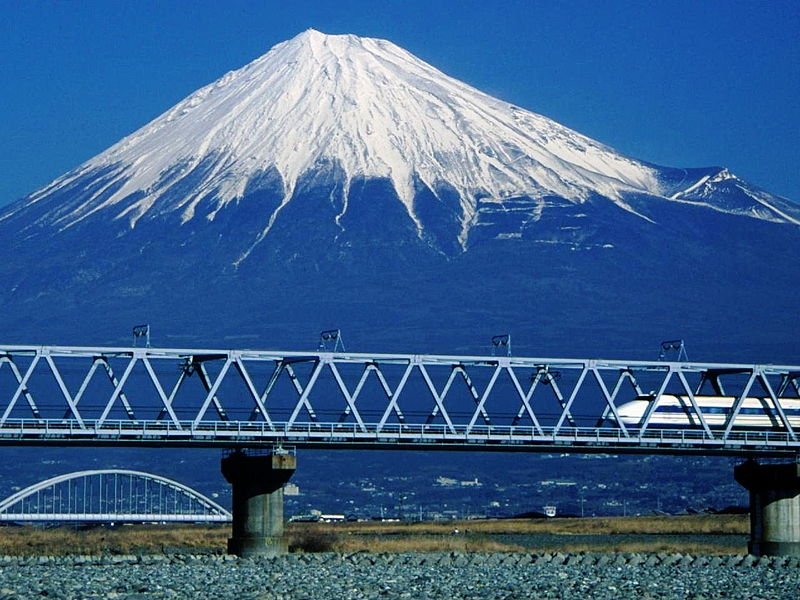
Day trip to Kamakura
Just an hour away from Tokyo, Kamakura is one of the most preferred options when it comes to visiting historical monuments, temples, and shrines. A little-known fact is that it was the first feudal capital of Japan (1185-1333), which when Buddhism was widely spread across the country.
Many tourists refer to Kamakura as Kyoto of Eastern Japan nowadays because of its countless historical monuments and cultural heritage. To give you a better idea: Kamakura is a precious hamlet with over 65 Buddhist temples, and 19 Shinto Shrines spread across the crossroads the city and its’ surrounding hills.
Kencho-ji is Japan’s oldest Zen monastery and Kamakura’s pride. It continues to play a vital role in the Zen religion up to nowadays. It is no consequence it takes the number one on our list. Visiting this temple is a “must”.
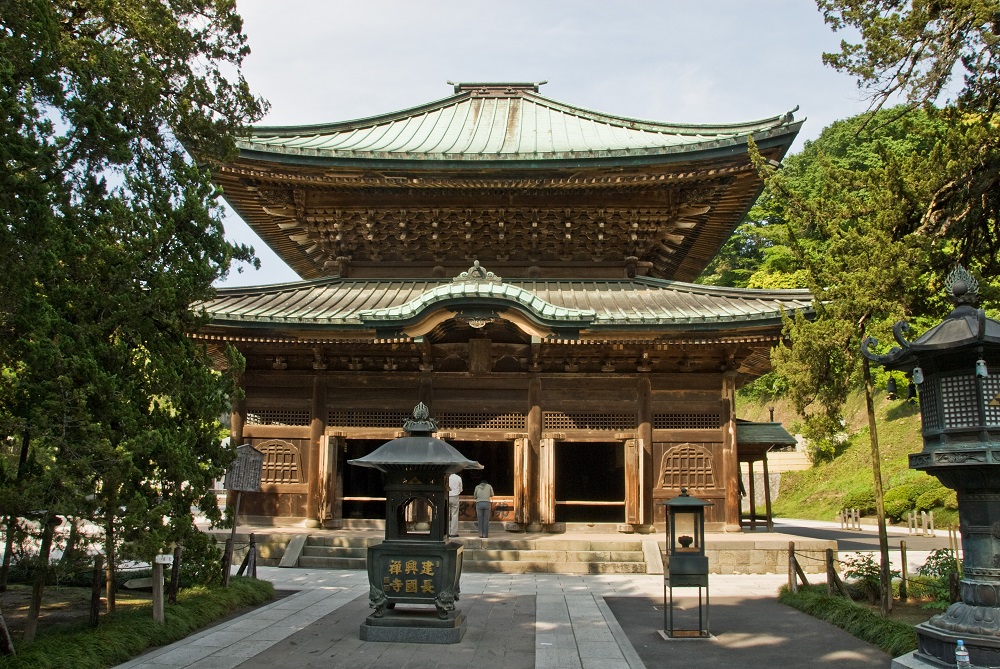
Tsurugaoka Hachimangu Shrine is often referred to as the spiritual heart of the hamlet, located just about 10 minutes walking distance from Kamakura station. Going up the stairs of this charming shrine, you will have the opportunity to admire a magnificent panoramic view of the seashore.
Kotokuin Temple offers one of the most impressive Great Buddha attractions ever built (in Japanese is called Daibutsu). It is the second largest Buddha statue in Japan, 11 meters high (37 ft.), this massive Buddha weighs 93 tons. Note that the biggest similar monument in Japan is in Nara. However, no two people can ever agree on which one is the greatest.
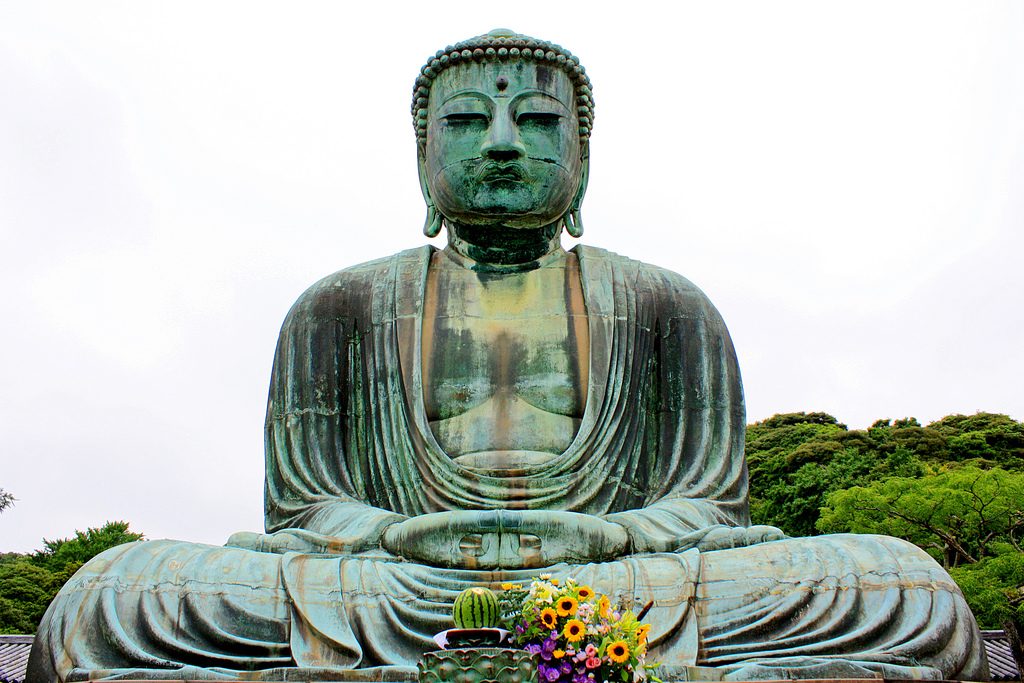
For more ideas on what to see and do in Kamakura, take a look at our Japan in 7 days travel itinerary.
How to get from Tokyo to Kamakura
The city can be easily reached with your Japan Rail Pass. Take the JR Yokosuka Line for Kurihama from Tokyo station and get off at Kamakura station.
Day trip to Nikko
Nikko means sunlight in Japanese. A fitting description for the opulence and elegance the city has to offer.
Nikko was the home of the powerful Tokugawa Ieyasu, the leader to whom James Clavell’s great novel Shogun is dedicated and the one person who united all of Japan in times of war, conflict, and constant invasion.
If you would like to pay your respects, together with many Japanese nationals, head to Northern Nikko, where you will find Toshogu Shrine. Built in the late 17th century, this shrine is now the sacred home of Tokugawa’s remains, interred in a mausoleum.
The sacred land, on which Toshogu and nearby shrines are located is known as Nikko Sannai. In 1999 was designated a World Heritage Site by UNESCO.
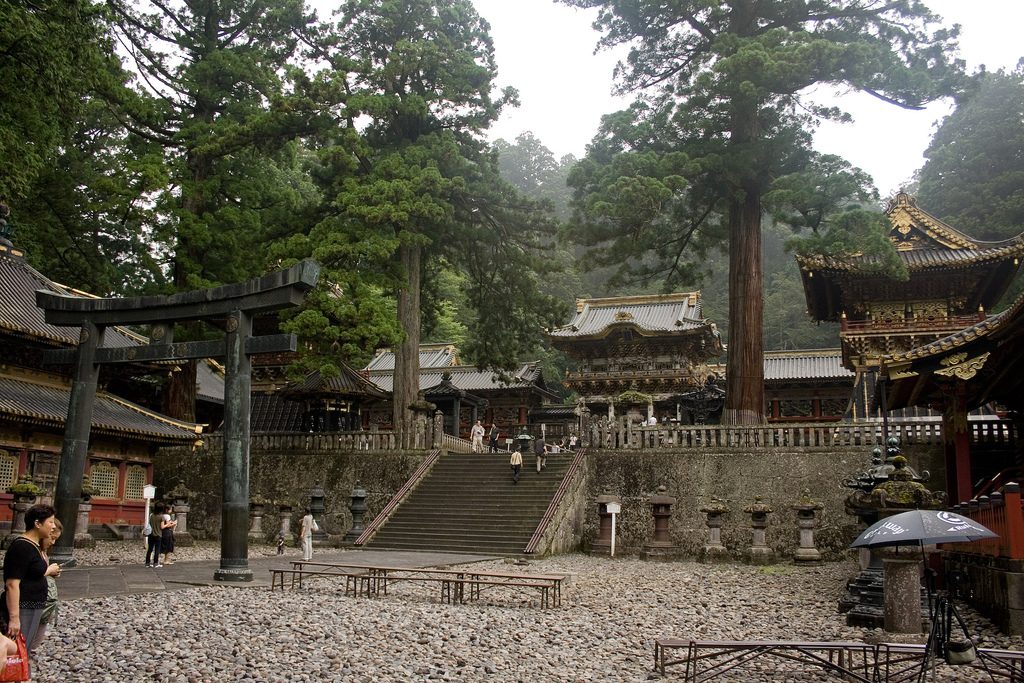
All of this is surrounded by thousands of glorious cedar trees, also known as Nikko National Park. If you want to get yourself immersed in the magic of the forest, try going on a foggy day – this will be a guaranteed experience to remember.
How to get from Tokyo to Nikko
Reaching Nikko from Tokyo takes about two hours. One of the fastest options is taking Shinkansen Yamabiko 151 to Utsunomiya. Once there, take the JR Nikko Line to Nikko Station. The Japan Rail Pass will cover all train costs.
Day trip to Yokohama
Yokohama is one of the most emblematic cities in the recent history of Japan.
The last 200 years have transformed the city completely – from being a small port village with a little over 100 houses, it is now the second most populated city in Japan, with over 3.6 million inhabitants.
Once there, make sure to visit Sankei-en Garden. A peaceful place, full of traditional curiosities and historical buildings. Many see it as a traditional theme park, which it is not. However, the beauty, structure, and organization might lead you to think so. Definitely a “must” when traveling to Yokohama.
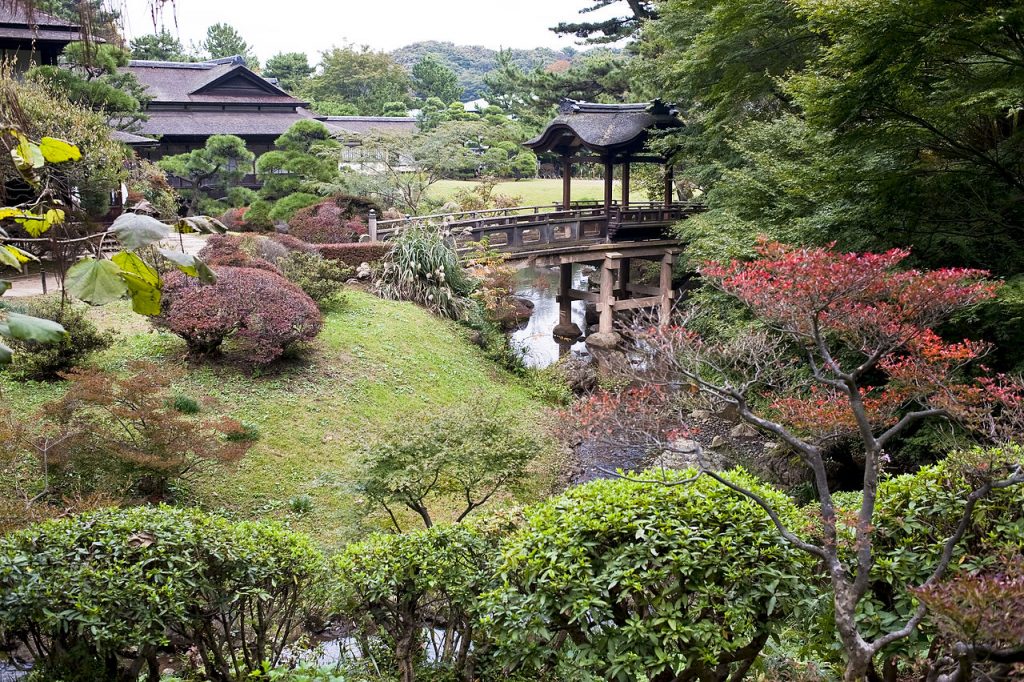
Yokohama Chinatown may not be part of your typical Japanese touring plan, however, if it is the largest in Japan! It might be worth it, right? A curious fact is that the city has quite a large Chinese population. This has contributed immensely to the authenticity and quality of the food, drinks and curious little shops you might stumble upon.
Finally, Minato Minari 21 (Harbor of the future,” translated from Japanese) is Yokohama’s pride. A massive urban project, which now includes museums, hotels, shopping centers, restaurants, Sky Garden Observatory, Cosmo World amusement park, spa and relaxation center and more.
If you have the time, you can spend a whole day there, going from one place to another, but try to always keep in mind that Yokohama was a small village, with close to 100 houses in total. And now, it is Japan’s most significant port and second most populated city!
How to get from Tokyo to Yokohama
Getting to Yokohama will take you less than half an hour – take the JR Tokaido Line Rapid Acty for Odawara from Tokyo Station and get off at Yokohama Station. Your Japan Rail Pass will cover the cost of the trip.
Day trip to Hakone
Hakone is one of the closest and most preferred weekend destinations for citizens of Tokyo. This is no surprise, considering that beautiful lakes, mountains, hot-spring resorts, historical sites and incredible views of Mount Fuji are just a small number of the attractions Hakone has to offer.
The Hakone Open Air Museum can easily be the first and last thing you want to see in the city, should you be in a rush. Children and adults are going to enjoy their time to the fullest with the amazing collection of Picasso, Henry Moore, Taro Okamoto and more artworks, spread across the open space of the museum. The surrounding mountains make the experience even more unforgettable.
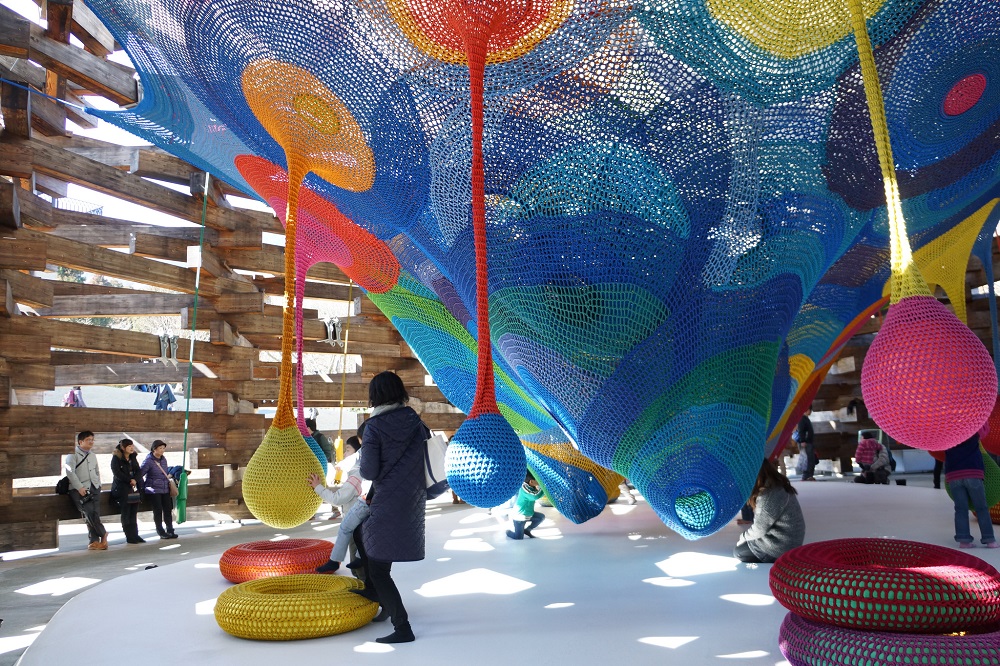
Owakudani Nature Trail is a one in a lifetime attraction for all foreign visitors, as well as for many local travelers. Mesmerizing views of Mount Fuji are also part of the package that is the nature trail. The area is located around a crater, formed during the last eruption of Hakone Mountain, about 3000 years ago. Time doesn’t matter when it comes to volcanoes: sulfurous fumes, hot rivers, and springs can be experienced like never before.
Lake Ashi, together with the incredible mountain views, has become the signature of Hakone. Similar to the nature trail, lake Ashi was also formed by the volcanic eruption. Beautiful scenery and long relaxing boat trips will make you want to breathe in deeper and deeper, take in as much as you can. Note that due to the cloud density and sometimes high level of fumes the mountain views can often be blocked. Always try to check the weather before going to assure your best view chances.
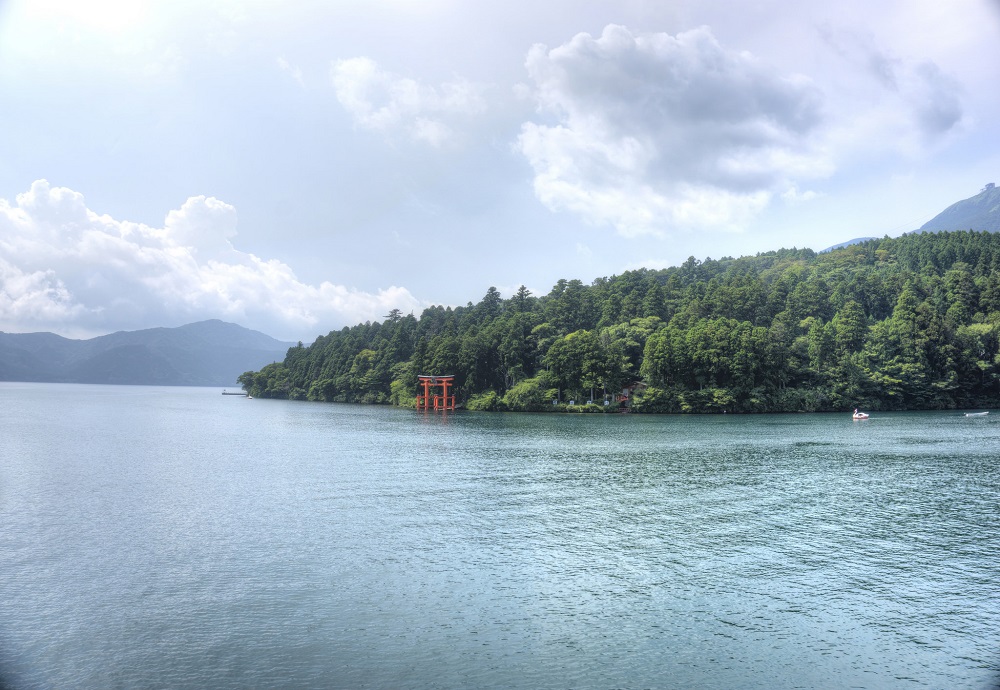
How to get from Tokyo to Hakone
Getting to Hakone from Tokyo will take you about an hour and a half. Take the Tokaido-Sanyo Shinkansen, covered by your Japan Rail Pass, from Tokyo Station straight to Odawara. Once there, take the local Hakonetozan Line, which will take you straight to Hakone Yumoto station, in just 14 minutes (4 stops).
Other Tokyo travel options
If you find yourself with more free time and desire to explore the surroundings of Tokyo, then make sure to check out Odaiba. This artificial island has become quite a popular shopping and entertainment center. Hot spring resorts are also a popular option for relaxation in Japan.
Kusatsu Onsen is one such resort, famous all around Japan. And last but not least, if you are traveling with children or adults with the child still trapped inside them, make sure to visit Tokyo Disney Resort, located just 15 minutes from Tokyo Station. The fun is guaranteed!
